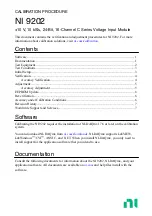
4
Live Editing
99
Follow
Follow timing is used to trigger cues automatically, or to delay the activation of submasters
and macros linked to cues. When a follow time is attached to a cue with no linked
submaster or macro, the next cue (or a linked cue) will automatically play back when the
follow time completes. Follow times start their countdown from the moment you press
[Go]
.
When a follow time is attached to a cue with a linked submaster or macro, the activation of
the submaster or macro is delayed until the follow time completes.
Assign follow time to a cue:
Step 1:
), or press
[Cue]
[
x
]
, where [
x
] is the
cue number you want to select.
Step 2:
Press
[Follow]
[
x
]
[Enter]
, where [
x
] is the follow time.
Clear a follow time:
Step 1:
Press
[Cue] [
x
]
, where [
x
] is the cue number containing the follow time.
Step 2:
Press
[Follow] [Clear]
. This removes the follow time.
N o t e :
Follow is found on
[S5 - Follow]
in Stage on Express facepanels.
Rate
You can assign a rate to a cue or submaster. A rate applies a multiplier to fade timing that
either slows down or speeds up the playback of that cue or submaster. A rate value of 100
equals the recorded time of the cue or submaster. A rate of zero would stop the playback,
a rate of 2000 is the maximum rate causing the fastest playback. You can add a rate value
to a cue or submaster manually, or you can apply a rate to a cue or submaster as it is played
back, then update the rate to the cue or submaster.
Add a rate manually to a cue or submaster:
Step 1:
Press
[Cue]
[
x
]
to select the cue, or
[Sub]
[
x
]
, to select the submaster, where [x]
is the cue or submaster number.
Step 2:
Press
<S7 - More Softkeys>
[S5 - Rate]
[
y
]
[Enter]
, where [y] is the rate value
between 0-2000.
Clear a rate:
Step 1:
Press
[Cue] [
x
]
, where [
x
] is the cue number containing the link.
Step 2:
Press
[S5 - Rate] [Clear]
. This removes the rate.
Multi-Part Cues
There are occasions where you want a single cue to be able to fade different channels in
different times. This can be accomplished with a
part cue
. A cue can be split into up to eight
parts, each of which contains discrete channels (a channel can only move in a single part
of a cue) and discrete fade times.
For example, as an actor walks across the stage, you would like channels 1-5 to fade out
as he crosses from stage left to stage right. You do not want the channels to fade out
together, you would rather have each channel fade out as the actor leaves the area that
channel is lighting. You can accomplish this either by writing five cues, one for each light,
and playing back each cue manually (or with follow times), or you can write this transition
as a part cue. The advantage of a part cue is that it is stored as a single cue number in the
cue list.
Содержание Emphasis Lighting Control System
Страница 10: ...viii Emphasis Console v1 4 0 User Manual This page intentionally blank...
Страница 14: ...4 Emphasis Console v1 4 0 User Manual This page intentionally blank...
Страница 62: ...52 Emphasis Console v1 4 0 User Manual...
Страница 114: ...104 Emphasis Console v1 4 0 User Manual This page intentionally blank...
Страница 152: ...142 Emphasis Console v1 4 0 User Manual This page intentionally blank...
Страница 164: ...154 Emphasis Console v1 4 0 User Manual This page intentionally blank...
Страница 244: ...234 Emphasis Console v1 4 0 User Manual This page intentionally blank...
Страница 252: ...242 Emphasis Console v1 4 0 User Manual This page intentionally blank...
Страница 274: ...264 Emphasis Console v1 4 0 User Manual This page intentionally blank...
Страница 276: ...266 Emphasis Console v1 4 0 User Manual This page intentionally blank...
Страница 291: ...This page intentionally blank...
















































